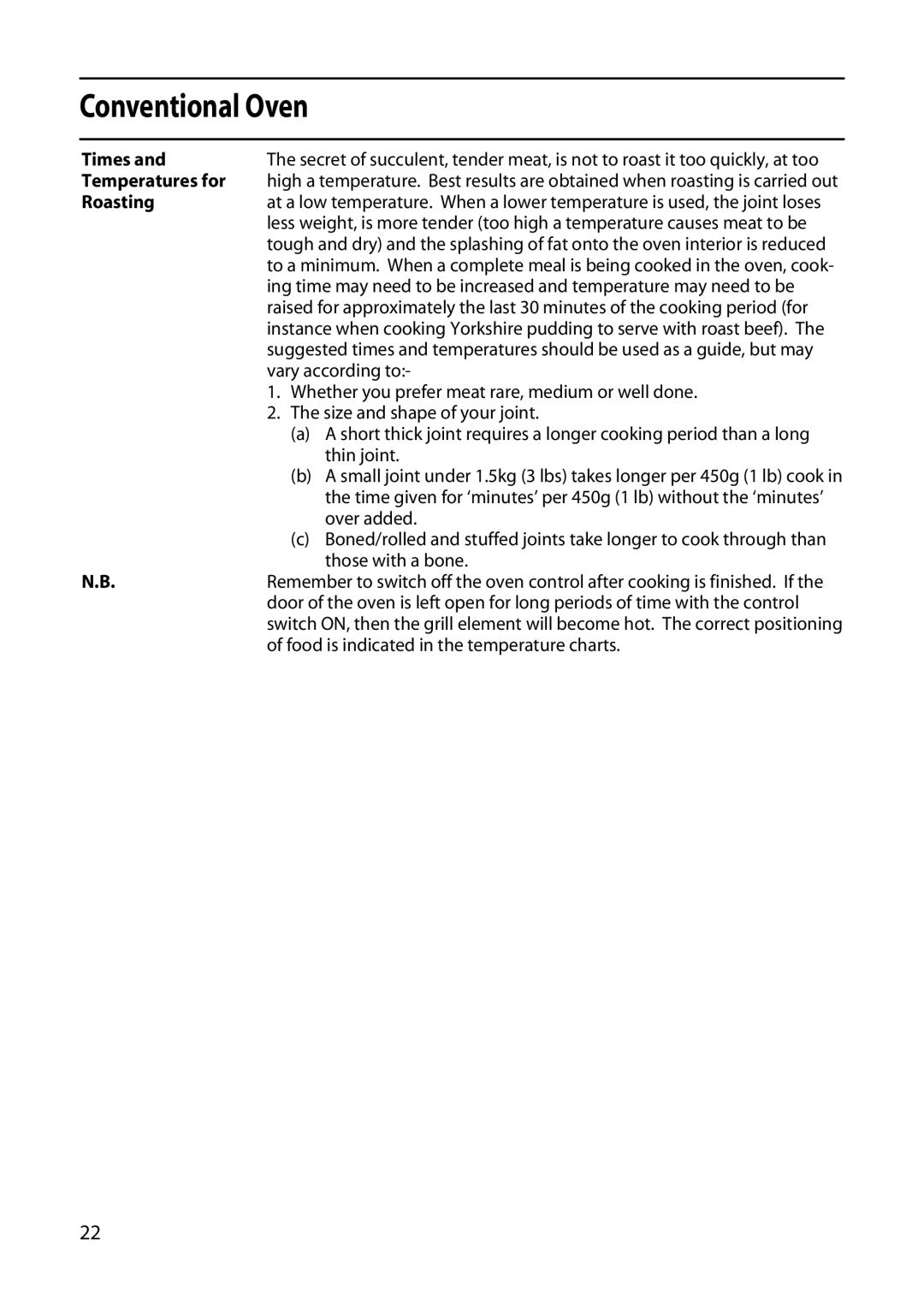Conventional Oven
Times and | The secret of succulent, tender meat, is not to roast it too quickly, at too |
Temperatures for | high a temperature. Best results are obtained when roasting is carried out |
Roasting | at a low temperature. When a lower temperature is used, the joint loses |
| less weight, is more tender (too high a temperature causes meat to be |
| tough and dry) and the splashing of fat onto the oven interior is reduced |
| to a minimum. When a complete meal is being cooked in the oven, cook- |
| ing time may need to be increased and temperature may need to be |
| raised for approximately the last 30 minutes of the cooking period (for |
| instance when cooking Yorkshire pudding to serve with roast beef). The |
| suggested times and temperatures should be used as a guide, but may |
| vary according to:- |
| 1. Whether you prefer meat rare, medium or well done. |
| 2. The size and shape of your joint. |
| (a) A short thick joint requires a longer cooking period than a long |
| thin joint. |
| (b) A small joint under 1.5kg (3 lbs) takes longer per 450g (1 lb) cook in |
| the time given for ‘minutes’ per 450g (1 lb) without the ‘minutes’ |
| over added. |
| (c) Boned/rolled and stuffed joints take longer to cook through than |
| those with a bone. |
N.B. | Remember to switch off the oven control after cooking is finished. If the |
| door of the oven is left open for long periods of time with the control |
| switch ON, then the grill element will become hot. The correct positioning |
| of food is indicated in the temperature charts. |
22
